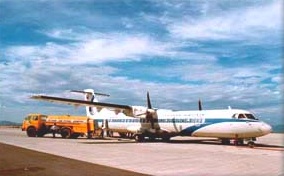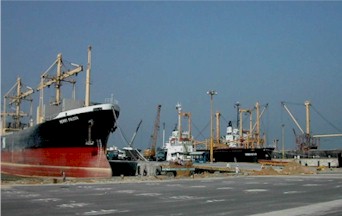
| Update on Vietnam
Infrastructure
and Transportation 2008 Seaport | Airport | Airlines   General Director Mr. Mai Van Phuc of the Vietnam National Shipping Line (Vinalines) announced the company would start the construction of 11 projects, including 9 seaport projects in 2008, reported Vietnam News early in the year. Examples of ports in the project are: the constructions of Van Phong International Port (Khanh Hoa), the first phase of Hai Phong International Port, and a new port in Hiep Phuong (Ho Chi Minh City) to prepare for the transfer from Nha Rong and Khanh Hoi Ports. At present, businesses have spent hundreds of millions of US Dollars a year sending ships abroad to be repaired because the country is short of yards capable of repairing ships. Vinalines also has plans to establish a yard to repair ships in Ba Ria – Vung Tau, Quang Ninh provinces and Hai Phong City. According to the company's records, Vinalines also spent 630 million US Dollars on 30 new ships last year. In 2007, Vinalines earned 14.64 trillion VND while posting profits of 861 billion VND, with respective gains of 26 and 51 percent over 2006. Such impressive results saw Vinalines contribute 777 billion VND to the State budget that year. In 2008, with the new developments, the company targets revenue of 17 trillion VND (1 billion US Dollar) in earnings, a year-on-year increase of 16 percent. The Construction of Cam Ranh Airport Terminal In November 2007 the news also reported on the starting of construction work of a terminal in Cam Ranh Airport of Khanh Hoa Province near the Nha Trang coastal resort. The two-storey building will help Cam Ranh upgrade to an international airport which is very important for Vietnam's growing tourism industry. The VND198 billion (US$12.3 million) terminal will be able to handle 800 passengers and is expected to start operating in late 2009. The old terminal was only capable of handling 250 passengers at one time. In 2007, Cam Ranh received 450,000 passengers, two times more than the total in 2004. The Cam Ranh airport was originally built by the U.S. and following 1975 was used by the Vietnamese military and the Soviet Union even used the airport to support flights in the region until the late 1980s/early 1990. With the closing of the Nha Trang airport, Cam Ranh airport became the airport for Nha Trang and the surrounding area. After moving from military to civil purposes, the number of passengers going through the airport has increased annually by 23 percent. Vietnam Airlines and its growth Saigon Times Newspaper reported that Vietnam Airlines is looking to maintain annual double-digit growth by 2010 despite increasingly fierce competition from both domestic and foreign airlines. In 2006, Vietnam Airlines transported more than 6.8 million passengers, 3.1 million of them foreigners, an increase of nearly one million against 2005. The carrier earned more than VND17.5 trillion (US$1.1 billion) that year, up 12.5% year-on-year. In 2007, it was estimated that Vietnam Airlines carried nearly 7.7 million passengers, up 14% over 2006. The total number includes nearly 3.4 million international passengers, a year-on-year increase of 10.2%. Vietnam Airlines chairman Nguyen Sy Hung said the airline was targeting annual growth of 12-14% between now and 2010 .The airline will continue expanding its aircraft fleet by purchasing and chartering more aircraft to better service the carrier's current domestic and international routes, and to prepare for new services to overseas destinations. It plans to double its fleet to more than 80 by 2015. Due to increasing demand for air travel from the U.S. where some l.5 million overseas Vietnamese, or locally known as Viet Kieu, are living, Vietnam Airlines plans to launch direct flights to the United States. Besides Viet Kieu, more U.S. business people are eyeing Vietnam's fast growing economy, particularly after the country's accession to the World Trade Organization a year ago. The airline is also spending heavily training staff and proceeding with an e-ticket scheme for passengers to make it easier for them to make bookings and meet the requirements for an airline member of the International Air Transport Association (IATA). More of our useful articles: |
